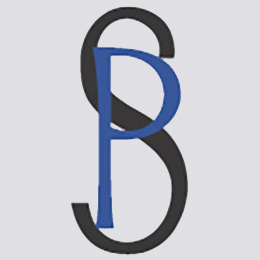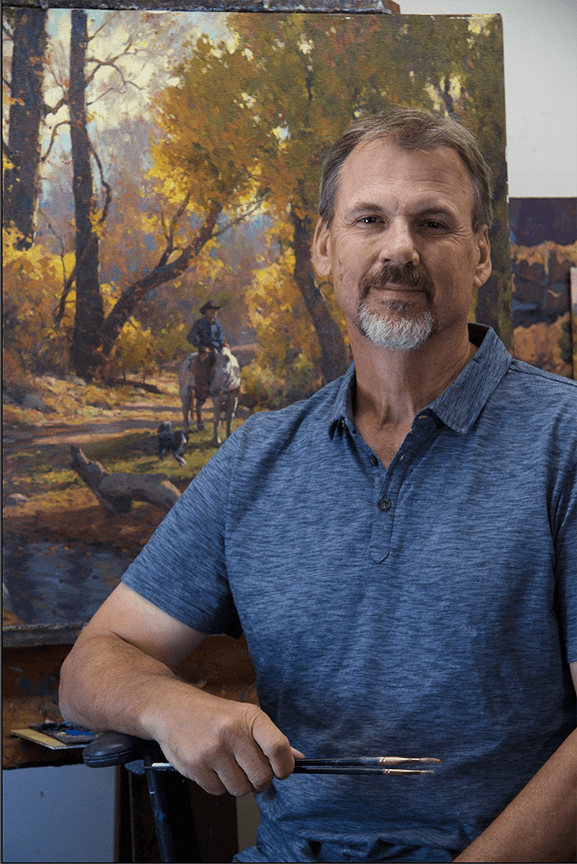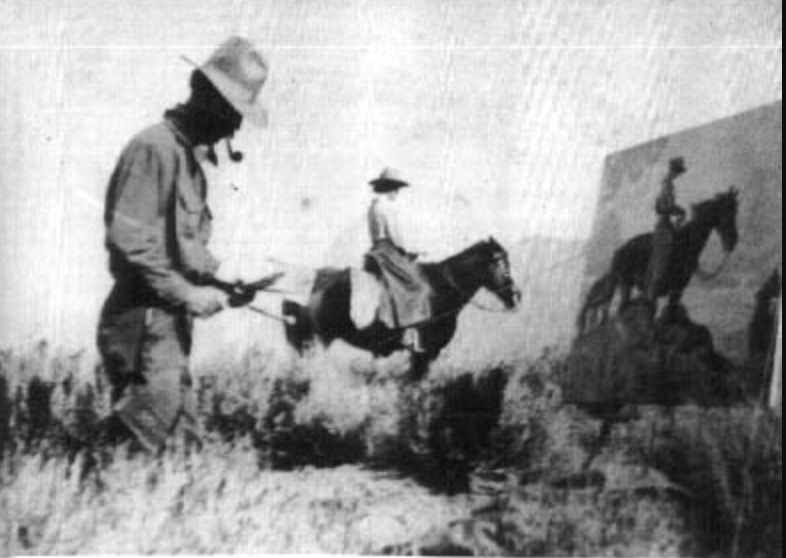Phil Starke Studio Newsletter - May 2018
Phil Starke is a professional fine artist with prestigious gallery representation in the western United States and teaches workshops and online fine art courses.


PHIL STARKE STUDIO NEWSLETTER
May 2018

May in Tucson means getting out to paint at 5:30 am because the sun is too hot and straight up in the sky by 9:30 am. It's still cool in the evening and early in the morning but that won’t last long.
I went out to Saguaro Park West a couple of evenings ago and found a good spot to catch the sun light setting on the Catalina and the Tucson mountains. Like all good spots it took too long to get there, too many thorns to pull out of my legs and shoes, but it was worth it. (Images may be enlarged when clicked.)



The Settlers West May Show was last weekend, it was good to see people I haven’t seen for a while. I sold my 18x24 inch oil painting, "Night Fall in New Mexico", a night scene. Thanks to Stu, Michael and Carol.
I’ll be in the studio working on a series of paintings of Western Wyoming, using photo’s and color studies from a painting trip. It's always a challenge to translate what you see outside to a larger studio version.




I want to thank everyone who participated in the Mt. Pleasant TX workshop in April, You all made it very enjoyable. Great place to paint and learn.
ARTIST AT A GLANCE
W Herbert ("Buck") Dunton, 1878 to 1936

W. Herbert ("Buck") Dunton was born William Herbert Dunton on August 28, 1878 on the family farm near Augusta, Maine. His parents were William Henry and Anna Katherine Pillsbury Dunton. In his childhood years, he spent a great deal of time in the Maine woods with his Grandfather Pillsbury. This sparked an interest in hunting, animals, and the outdoors, that lasted a lifetime.
A life changing event occurred in 1896 when he ventured to Montana. He fell in love with the West and for the next fifteen years made summer trips to Wyoming, Colorado, Oregon, New Mexico, Montana, and Mexico where he cowboyed and hunted. During these trips, Dunton contributed pen and ink drawings to local newspapers.
After a stint at the Cowles Art School in Boston in 1897, and further studies with Andreas M. Andersen, William L. Taylor, and Joseph Rodefer DeCamp, Dunton began his illustration career in earnest. He married in 1900, moved to New York in 1903, and his illustration career boomed. In 1908, Dunton was elected to the artists' social fraternity, the Salmagundi Club, and around 1911 he continued his studies at the Art Students League under Frederick C. Yohn, Frank V. DuMond, and Ernest Blumenschein.



Mr. Dunton was an accomplished artist at an early age. He illustrated for Harper's, Schribners, and many other magazines. He also created artwork for many books.
Dunton was becoming strained from the pressures associated with being a commercial illustrator. In June of 1912, Ernest Blumenschein suggested to Dunton that he visit Taos, New Mexico. After this initial visit, and another the following year, W. Herbert Dunton permanently relocated to Taos in 1914. This is where he was able to thrive as a western illustrator, combining his two loves -- hunting and painting. It is Ernest Blumenschein who can be given the credit for getting Mr. Dunton to this environment.



Beginning that year (1914) his paintings were accepted to the annual exhibitions at the National Academy of Design at New York, the Pennsylvania Academy of the Fine Arts at Philadelphia, and the Art Institute of Chicago, a practice he continued until 1935.
In a 1913 interview, W. Herbert Dunton stated, "This is the ideal place for me because there are more varieties of atmosphere than I have found in any other place. . . . There are several varieties of sage and cactus for backgrounds, according to the elevation that you choose. The Taos Indians are as fine types as I have ever seen and if one wants to paint a Mexican picture he can get a background almost anywhere near Taos".
Although he thrived creatively in his western environment, by leaving his old career he forfeited the sure income of commercial illustration and lived in near poverty for the rest of his life.



In July 1915, Dunton helped found the Taos Society of Artists with Berninghaus, Blumenschein, Couse, Phillips, and Sharp, and exhibited with the Taos Society all over the United States during its annual exhibition circuits. He resigned from the Society in 1922, however, perhaps because of a disparaging remark made by Walter Ufer about Blumenschein.
Forced to market his work alone, between 1922 and the early 1930s, Dunton arranged one-man exhibitions in places such as Kansas City, Missouri; Tulsa and Ponca City, Oklahoma; and the major cities in Texas: Amarillo, Dallas, El Paso, Fort Worth, Galveston, Houston, and San Antonio. In 1923 he was commissioned to paint three murals for the Missouri State Capitol.
With the effects of the Depression affecting sales, Dunton turned to portrait drawings and lithography to make art that was affordable during lean times. He also painted under the Public Works of Art Project in New Mexico.
Dunton's health began to decline as early as 1928 when he was injured by a "rambunctious mare" and suffered from duodenal ulcers. His health continued to deteriorate and, in 1935, prostrate cancer was discovered followed by diagnoses of stomach and lung cancer. On March 18, 1936, W. Herbert "Buck" Dunton died at Taos at age 57.
The Stark Museum of Art owns nearly 400 Dunton works. Selected collections are at the Eiteljorg Museum, Kit Carson Memorial Museums, Museum of New Mexico, Panhandle-Plains Historical Museum, The Rockwell Museum, and the San Antonio Art League.
This biography was found at the Dunton Homesite at www.dunton.org
ARTIST TIP
How To Fix A Photograph That's Too Busy

We all have photos that we think would make great paintings but they are so filled with clutter and detail that we tend to pass them by. The photo below is one of those photos
I’m interested in the horse and the man holding the reins, as well as the shadow pattern on the ground, but that's about it. Nothing else would help or support the center of interest. Certainly not the semi truck or the background buildings, they're too busy and distracting.
What we can do is think more of a vignette version, where we eliminate all subjects except the center of interest. Creating shapes and values in the background that support the subject but don’t distract; more of an abstract view of the background.
If we keep the background colors muted, and keep a value that allows the man and the horse to stand out, it will work much better than rendering objects that don’t help the painting.

Have you signed up to get my free Newsletter?
Don't miss out on all my great content!
If you have friends who would enjoy this newsletter, please share.
EDUCATIONAL RESOURCES
PHIL STARKE ONLINE MENTORING - Weekly video lessons sent out and video critiques of work from lessons. Each student has instructor access.
PAINT WITH CONFIDENCE FAMILY OF ONLINE COURSES - Includes:
Online Mentoring
The Bootcamp Workshop
The Plein Air Painting Course
Conquering Summer Greens Mini-Workshop.
A LA CARTE LESSON VIDEO DOWNLOADS - Individual Video Demos Available for Download
MY FREE RESOURCE LIBRARY FOR ARTISTS - Increase Your Knowledge, Strengthen Your Skills, Love Your Art! Free access to Art Guides, Video Tutorials, e-Books, Checklists, Tools, Supplies & More.


















